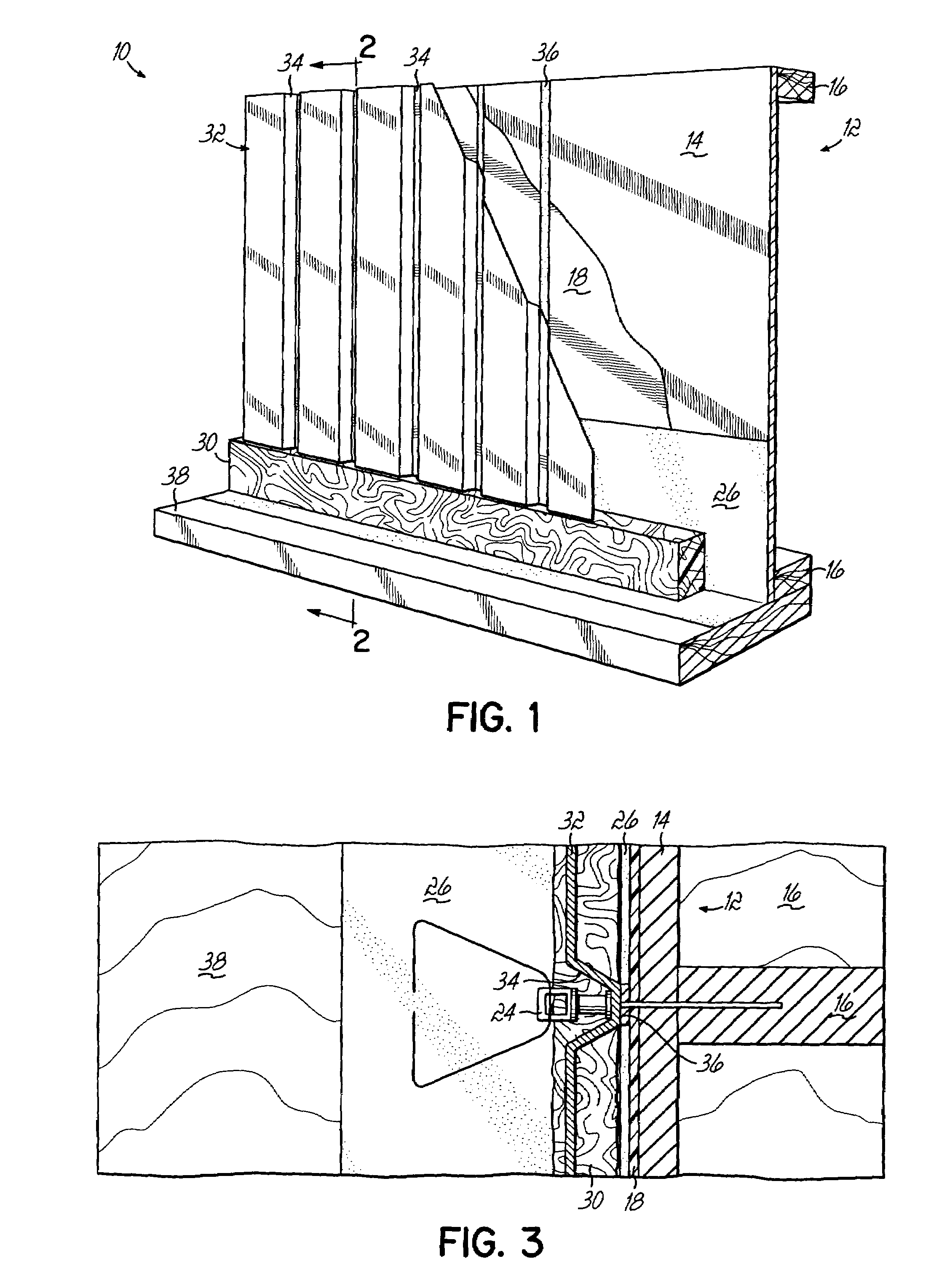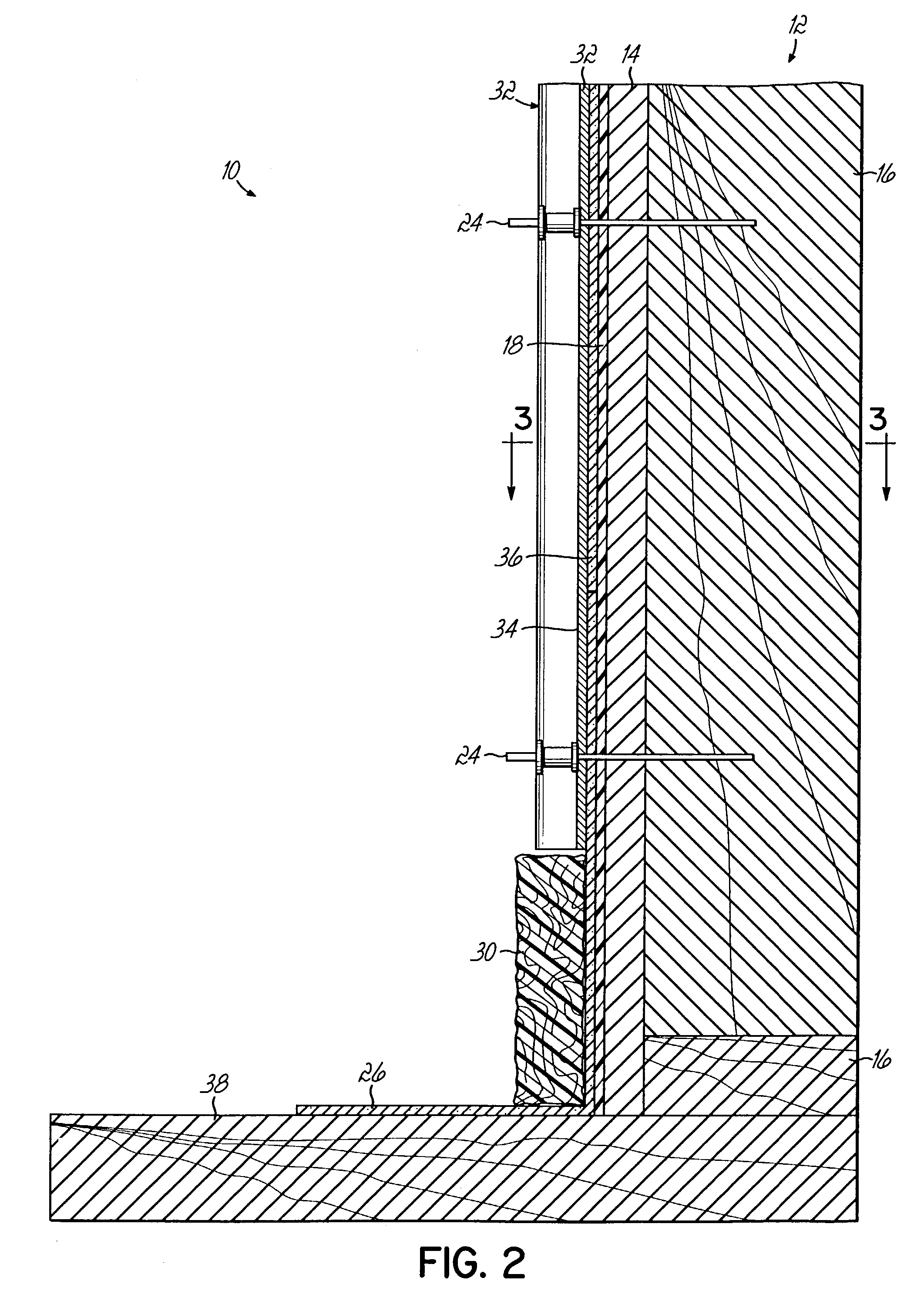Air circulation board for cavity wall construction
a circulation board and cavity wall technology, applied in the direction of walls, foundation engineering, condensed water draining off, etc., can solve the problems of occupants of the structure being harmed by the moisture traveling along the “bridge” to become trapped between the remaining vapor barrier, and the need for separation between the inner and outer walls not provided, so as to prevent excess mortar, minimize the chance of leaking, and easy and efficient installation
- Summary
- Abstract
- Description
- Claims
- Application Information
AI Technical Summary
Benefits of technology
Problems solved by technology
Method used
Image
Examples
Embodiment Construction
[0016]Referring to the drawings, a presently preferred embodiment of this invention is shown in a cavity wall 10 construction environment. As shown in FIGS. 1-3, brick veneer / cavity walls 10 are made with inner and outer walls 12, 13. The inner wall 12 is typically constructed from wood or steel studs 16 with an interior surface of drywall (not shown) or the like. The outer face of the inner wall 12 typically includes a layer of sheathing 14 such as plywood, particle board or the like, that is nailed to the wood framed wall 16. Commonly, a vapor barrier 18 covers the sheathing material 14 to limit moisture from progressing through the inner wall 12. The outer wall 13 (FIGS. 2A-3) is generally constructed of masonry materials 20, such as bricks, stone or the like, that are held together by mortar 22. Common practice in many municipal building codes requires a space of at least one inch forming a cavity 25 between the inner and outer walls 12, 13. The reason for this cavity 25 is to p...
PUM
 Login to View More
Login to View More Abstract
Description
Claims
Application Information
 Login to View More
Login to View More - R&D
- Intellectual Property
- Life Sciences
- Materials
- Tech Scout
- Unparalleled Data Quality
- Higher Quality Content
- 60% Fewer Hallucinations
Browse by: Latest US Patents, China's latest patents, Technical Efficacy Thesaurus, Application Domain, Technology Topic, Popular Technical Reports.
© 2025 PatSnap. All rights reserved.Legal|Privacy policy|Modern Slavery Act Transparency Statement|Sitemap|About US| Contact US: help@patsnap.com



